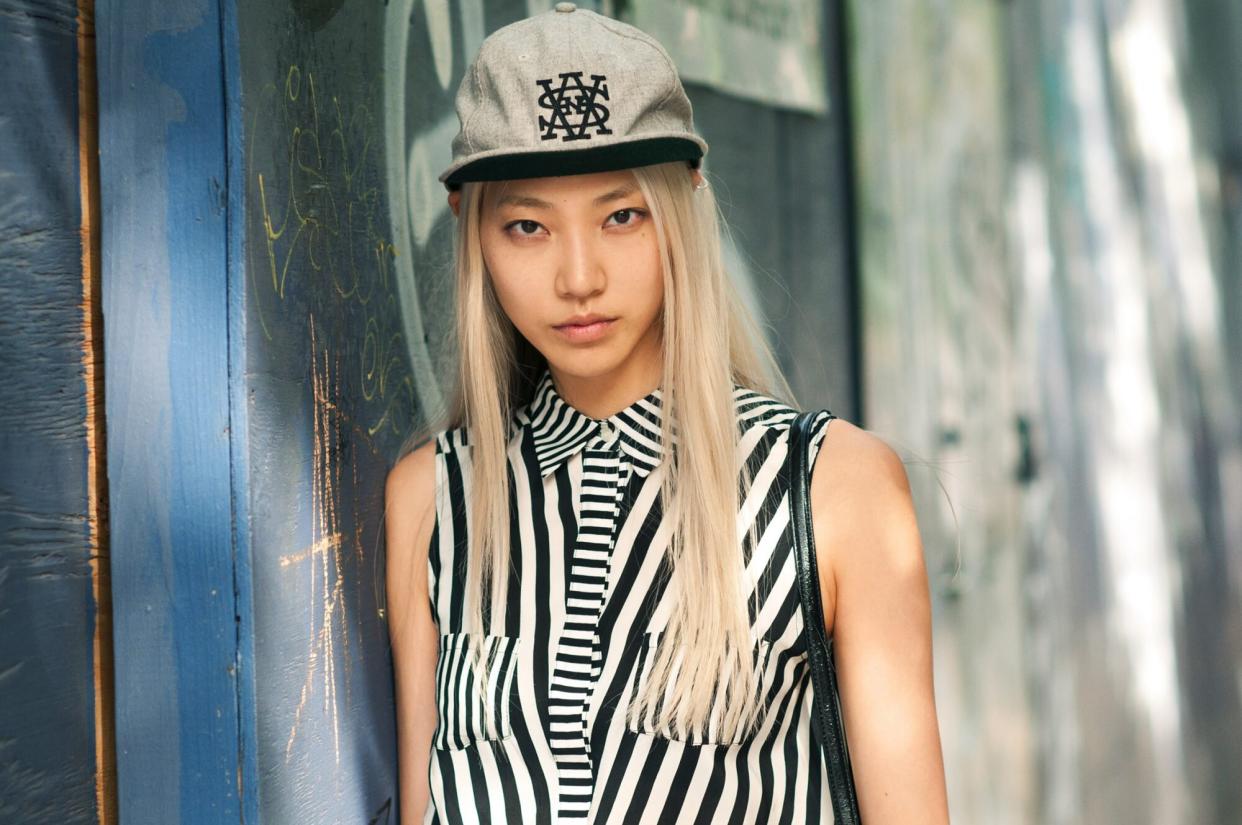Soo Joo Park is the new face of L'Oreal. Here's why it's a huge deal.

- Oops!Something went wrong.Please try again later.
It was just announced that Soo Joo Park will be the newest spokesmodel for L'Oréal Paris — making her the first Asian-American to represent the company in its 108-year history. It's a major win for diversity in fashion (and for a major powerhouse of a supermodel), and we couldn't be more excited to see Park in all her glorious fierceness as the face of an international beauty campaign.
Park was born in Seoul, South Korea, but grew up stateside after she moved to California when she was just 10 years old. Unlike many models today, who begin their careers as teenagers, Park started modeling quite late — at the age of 26, after completing a degree in Architecture at U.C. Berkeley. For her first couple years as a model, the 29-year-old (it was her birthday this week!) even lied about her age, shedding a couple years off out of self-consciousness about the industry's standards.
"Since the majority of my fellow models are pretty young, I felt older and a little pressured," she told The Cut in 2013. "At first, we weren't sure whether to reveal my real age, but I think after I bleached my hair, more people understood that I have a personality and I'm more than just a face."
Park is totally owning her age and her look now — and after landing her second major beauty campaign this year (she signed with Redken in late 2014), it's obvious she's thriving just being herself.
"For me, it was good to start later because I had a better idea of myself," Park, who has also modeled for Tom Ford, Mac, and Benetton, told Style, "With this industry, so much is dependent on trends, so your look can be in one season and then you're never seen again. So it's good to be confident about who you are and where you stand."
Clearly, her late start paid off, because she's no stranger to confidence. Park is best known for her platinum blonde hair (and brows), an intentional choice she made to avoid being typecast based on her ethnicity — which actually lost her a few jobs. A casting director even once told her she was "too much of a departure from the typical Asian model" because of it, which is problematic in so many ways — and a sign of how far we have left to go in normalizing diversity in fashion. Hopefully, Park's L'Oréal campaign will be at least a small step in the right direction.
As reported by Jezebel, only 7.67% of models at New York Fashion Week for the Fall-Winter 2014 season were Asian. Black models constituted 9.75% of all runway walkers. Latina models represented 2.12% of the total. This is in comparison with white models, who represented about 80% of NYFW catwalkers. For those who enjoy numbers, that means there were nearly four times as many white models as all non-white models combined. And it hasn't gotten much more diverse since — The Fashion Spot recently analyzed all of the Fashion Weeks from Fall 2015 and found 80% of models were white again.
It's no secret that diversity is a huge issue in the fashion industry, which is why extremely high profile campaigns like Park's with L'Oréal are so essential. Representation is important not because of statistics, but because everyone deserves to identify with someone represented in media and fashion. The more diverse representation we have, the more we can widen the too-narrow beauty standards, which damage young women's self-esteem.
"The thing is that I'm Asian, but I'm also Asian-American. And I think growing up in America and having a multicultural background, you know where you stand but you also want to melt into the pot," Park told Style.com. "So to be the first to represent a global brand is a huge honor. . .[People] are starting to understand that the world is getting smaller and you see different faces everywhere."
Here's hoping that seeing her face everywhere helps spark some change!

